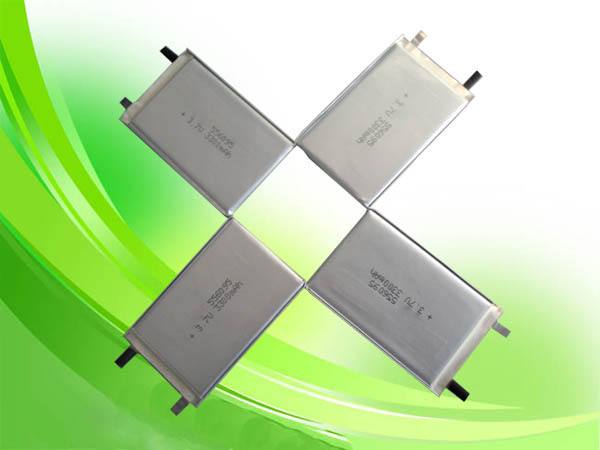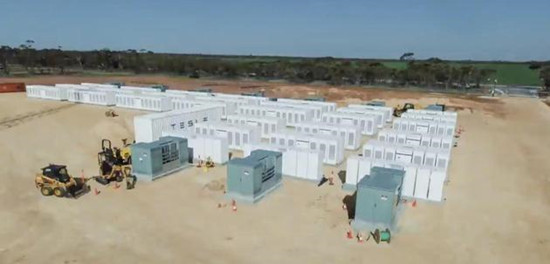How much do you know about LiPo battery charge voltage?
Aug 07, 2019 Pageview:1709
More and more consumer electronic devices are starting to use Lithium Polymer (LiPo) batteries. They are the newest type of batteries on the market. They are very powerful and have a huge capacity, a reason they are becoming very popular.
The batteries have been in the radio control industry for a few years now. Today, they are being used by almost everyone who needs long run times and high power.
They have a nominal voltage of 3.7V. If you find anything above 7.4V, it means there is more than one battery connected in series.
The batteries come with several benefits. This does not mean they don’t have drawbacks as well. Each user needs to decide whether the few negatives should affect your needs. As long as you follow the rules and treat the batteries the way they should be treated, you have nothing to worry about.
Different from other lithium-based batteries, LiPos have an alkali metal. This means it reacts with water and combusts. Any contact with oxygen will lead to combustion.
A guide to understanding LiPo battery voltage charge
The internet today is full of questions about LiPo batteries. Most of these questions regard use tips, which come down to the voltage charge of the battery.
In other words, one needs to understand how to care for the batteries. And this goes beyond charge, use and recharge.
Another best way to understand the voltage charge of LiPo batteries is by considering the devices they are being used in. Take, for instance, large electric RC helicopters. These are power-hungry monsters that peak up to 8000 watts at the shaft of the rotor.
Here are some most important terms related to these batteries’ charge voltage. Here are some that many people ask about;
· Cell arrangement – This term is described using the format xSyP. X and y are the integers. Cell arrangement is, therefore, what shows you how the batteries are wired up. Every battery is made up of cells. The chemistry of the battery determines the voltage of these cells. Apart from the voltage, there is the energy density and physical size of the battery that determines its capacity. S is for series while P is for parallel. A series of construction adds the voltage of the batteries, whereas a parallel construction focuses on the capacity. It is the combination of these two that makes up a battery. For instance, a battery with an arrangement of 3S1P has three cells in parallel with one series connection. You can tell the total number of cells by multiplying the 3 and the 1.
· Capacity – Capacity is determined by how the cells are arranged i.e. a parallel arrangement. It is measured in milliamp-hours (mAh). When you have a full charge, capacity tells you how long you should expect it to last. For instance, a 2600mAh means the battery has 2.6 amp-hours. In other words, the battery discharges at 2.6 amps every hour when in use. It can discharge 1.3 amps in two hours and so on. You need to know how much capacity your battery has to enable your effective usage.
· Voltage – since you understand capacity, it should be quite easy knowing what voltage is all about it is also determined by how the cells are arranged, and in this case, the series arrangement. Voltage can be measured using a few terms.
· Charged voltage. When a LiPo cell is fully charged, it has a voltage of 4.20V, anything above this damages the battery.
· Nominal voltage. Think of this simply as half-charged cell voltage. It is the volt between full charge and minimal discharge. Manufacturers use this to describe their batteries’ voltages.
· Discharged. This is the opposite of charging. For a LiPo battery, the minimum voltage should not go below 3.0V.
A battery like the one described above with a 3S arrangement can have a nominal voltage of 11.1V (3.70V x 3 cells). When fully charged, it will have a voltage of 12.6V and a full discharge will be 9.0V.
· Constant C rating – this is the rating that tells how many amps you can draw from the battery safely when discharging. C rating for charging tells you the safe amperage to charge your battery.
· Burst C rating for charging and discharging. It is also related to a constant C rating, but only higher.
Relationship between LiPo battery charge voltage and capacity
Many people get confused differentiating between charge voltage and capacity. Well, no one can blame you. The terms are almost related, and you need to be very keen to know which term to use at any given moment.
Capacity can be simply described by how big the battery is. In other words, how much milliamp hours does the battery give you? How long can you use the battery when fully charged? The SLA (sealed lead acid) in your car, for instance, has a capacity of around 50Ah. And if your battery is descried to have 3600mAh, it means the battery discharges 2.6 amps in an hour.
Voltage is also found using cell arrangement. Unlike capacity, voltage is focused on a series arrangement. When fully charged, a LiPo battery should not have more than 4.20V. And on discharge, the minimum you should get is 3.00V.
Voltage and capacity are related terms. A good LiPo battery should have the capacity to hold as much voltage as possible.
LiPo battery charging voltage and operating voltage problems
We have discussed in the section above about the C rating of the LiPo batteries. This is the safe continuous discharge rate for the battery. If for instance, it is written 15C, the battery should discharge at a constant of 15 times the capacity of the battery.
Sometimes the discharge rate can be too high, which affects the cells. In this case, you will find the burst C rating being mentioned.
Apart from this, charging or discharging a LiPo battery beyond a specified voltage can damage it. Every user needs to be aware of the maximum and minimum charge.
Read the manufacturer’s safe user manual to ensure you don’t expose your battery to risks. One other thing to avoid is charging or using the battery under harsh temperatures. Now that you understand what voltage for LiPo batteries means, it should be easy handling them appropriately.
- Prev Article: What is the lithium battery minimum voltage?
- Next Article: How to Test a 18650 Battery?
Leave Message
Hottest Categories
-
Hottest Industry News
-
Latest Industry News











